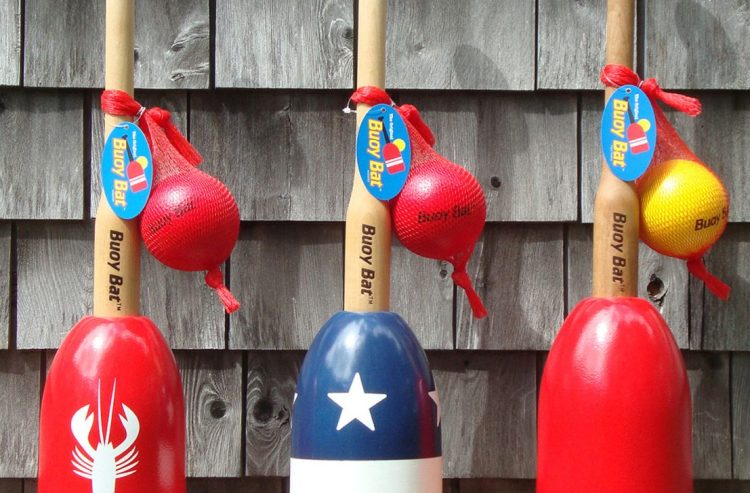Bill Page’s Buoy Bat isn’t the most sustainable product we’ve ever featured (it’s made with foam lobster buoys), but the bat does have a recyclable wooden handle and Page uses kid-friendly, nontoxic paint to decorate the buoy. And, well, opening day of baseball season was Thursday.
Buoy bats are for all ages, but they’re especially appropriate for for little kids who can’t quite yet swing for the fences. The bat comes with a ball that makes a satisfying “thumpy noise” when it comes into contact with the buoy.
“I do know it has helped kids who weren’t interested in sports be interested in playing ball,” Page said. “I’ve heard it from coaches. Some Little League organizations have told me that they actually bring Buoy Bat into the practices so that the kids who aren’t great hitters at young ages can feel successful about playing.”
A teacher from Texas told Page she buys them for her students who have developmental disabilities.
Page, a Red Sox fan who lives in South Berwick, came up with the idea for the Buoy Bat in 2008, when he was vacationing with his family in East Boothbay Harbor. “My kids found a buoy with a stick in it on the rocks, and right next to us on the lawn was my dad’s dog, and he had a tennis ball,” Page said.
Page gave the buoy-on-a-stick to his daughter, threw the slobbery ball at her, and she hit the ball over his head on her first try.
Page brought the buoy bat home, tossed it in his barn, and forgot about it for a couple of years. In 2010, preparing to go on vacation again, he made his first Buoy Bat from scratch so he and his wife could play with their kids. While on vacation, they played with two other families, and everyone had so much fun he decided to try to make it into a business.
“I’m one of those people who likes to feel good about what he does,” Page said. “The fact that people take what we make and play with it and have fun as a family just tears me up every time I think of it.”
Now, about 40,000 bats later, Page also makes and sells bases out of lobster trap rope. But bases aren’t even necessary for Buoy Bat, Page said, because the game has no rules. Use a tree for first base, and a swingset for second, Page suggests. “People just make up their own rules,” he said.
In his family, for example, if the base runner catches the ball that’s thrown at him, he’s safe and gets to run to the next base.
Buoy Bat & Ball sets cost $40-$42 and can be purchased through Page’s website, thebuoyguy.com, or at Hamilton Marine stores, Sherman’s Books & Stationery stores, the Children’s Museum in Portland, and dozens of other stores around the state. For a full list, visit the website.
Go Sox!
Send questions/comments to the editors.



